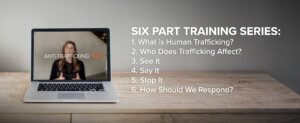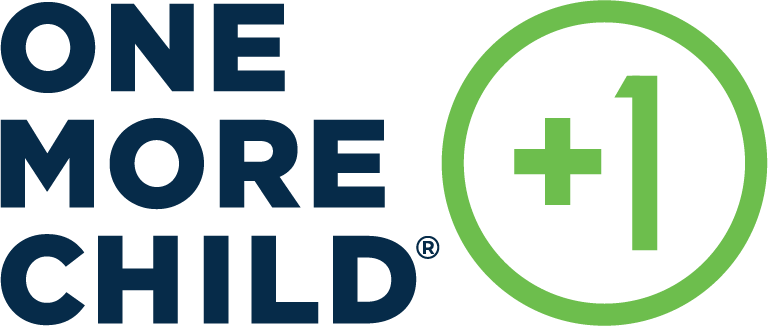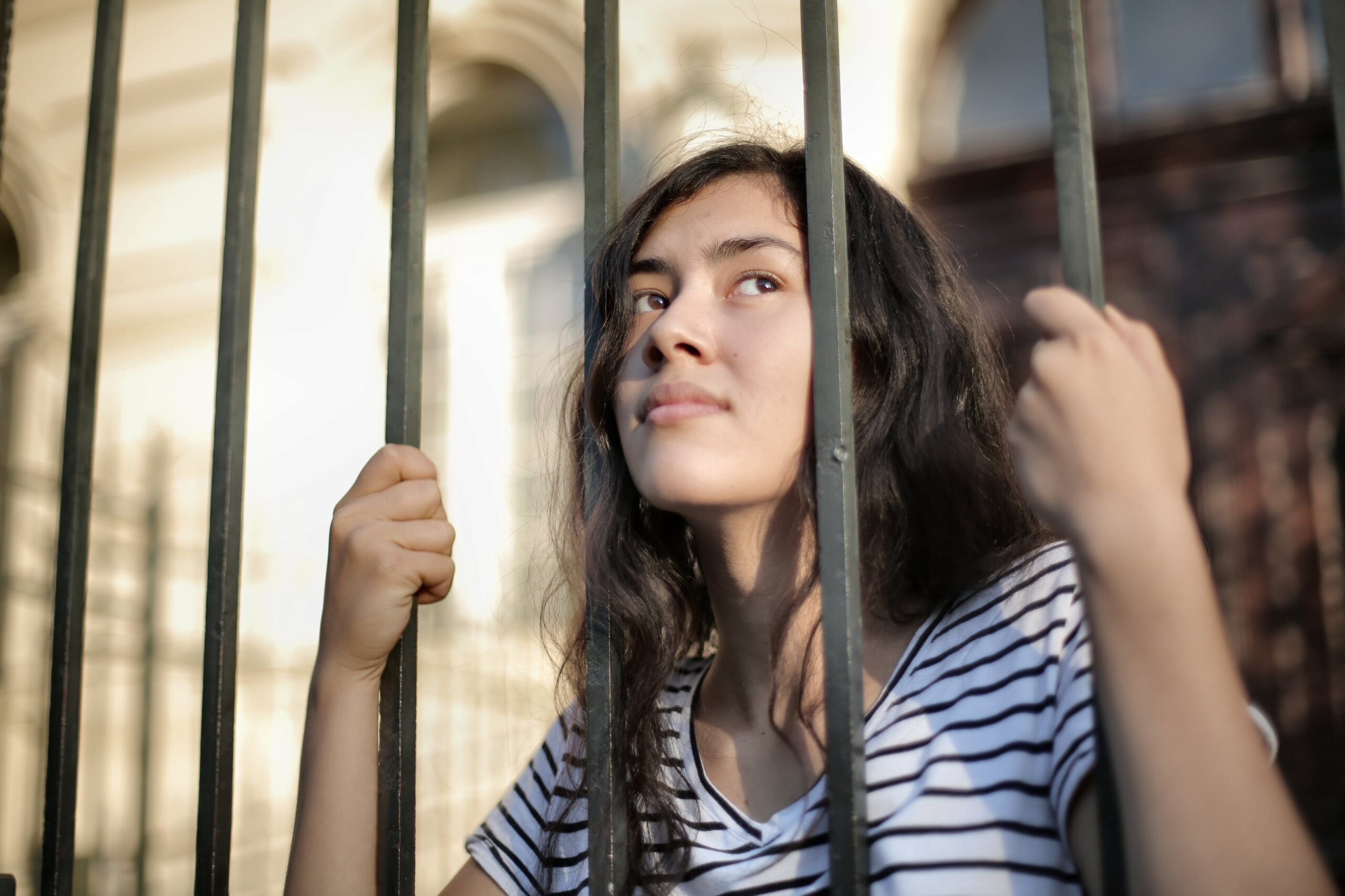As awareness surrounding human trafficking increases, so does the collective desire to help survivors in their journey toward healing. However, many individuals are still unsure how to answer “What can I do?” and “Where do I start?”
Help Begins with Understanding
Drawing on our experience in supporting survivors of human sex trafficking, One More Child is committed to providing resources, such as Anti-Trafficking 101, to empower individuals just like you to make a meaningful impact.
But you can make a difference by beginning to understand two things. First, each survivor has a unique situation. Second, many survivors do not initially identify their own experiences as trafficking.
When Lanita* was 15, she ran away, crossing state lines without her guardian’s permission. When she was recovered, the Department of Children and Families (DCF) screened her and identified her as a victim of human trafficking. She had been groomed, abused, and trapped in her circumstances. DCF referred her to One More Child’s Anti-Trafficking program for support. By tracing her story, we hope to illuminate the challenges faced by many like her so you can develop a deeper understanding of human trafficking and ways you can help survivors.
Who Falls Prey to Trafficking?
With a staggering 24.9 million victims worldwide, human traffickers target individuals of all genders, ages, backgrounds, and nationalities, exploiting them for financial gain and coercing them into forced labor or commercial sex (U.S. State Department, 2022).
Children, particularly those with backgrounds marked by poverty, abuse, abandonment, or neglect, are at an increased risk of trafficking. Specifically, minors with histories of trauma are vulnerable to exploitation as they attempt to fulfill basic physical and emotional needs including food, shelter, clothing, love, and a sense of belonging.
Some of the factors that increase an individual’s vulnerability to trafficking are typically categorized into societal risk factors. Here are the distinct characteristics of each:
- Lack of Awareness: The knowledge gap surrounding the commercial sexual exploitation of children, the sexualization of minors, and the inadequacy of resources to combat these issues.
- Community Risk Factors: Peer pressure, adherence to social norms, social isolation, and inadequately resourced schools, neighborhoods, and communities.
- Relationship Risk Factors: The occurrence or frequency of family conflict, disruptions, or dysfunction.
- Individual Risk Factors: Homelessness, runaway children, members of the LGBTQ+ community, individuals with a history in the juvenile justice system or foster care, and those who face stigma or discrimination.
The trauma Lanita endured as a teenager created hardships in all areas of her life. She struggled with substance misuse, challenging family relationships, mental health struggles, and many episodes of running away from her home. Her unrestricted and unmonitored internet access rendered her vulnerable to exploitation by her trafficker.
How Does Trafficking Happen?
There are many misconceptions about trafficking. One of the most pervasive myths is that it often involves kidnapping or physical force. In truth, most traffickers rely on psychological tactics, employing methods like trickery, manipulation, and threats to recruit, coerce, and exploit victims. Unlike dramatic portrayals seen in movies, more often, the real story begins with grooming.
 Grooming is a gradual process characterized by the incremental pushing of an individual’s boundaries. Grooming is an insidious technique that happens over time as the victim complies with a trafficker’s repeated, increasing requests for personal information, including suggestive photos and videos.
Grooming is a gradual process characterized by the incremental pushing of an individual’s boundaries. Grooming is an insidious technique that happens over time as the victim complies with a trafficker’s repeated, increasing requests for personal information, including suggestive photos and videos.
RELATED: Standing With Students to Advocate for Child Safety Online
Today, though not exclusively, grooming often begins online. The ease of sharing and storing information on social media, online games, live chat rooms, and community platforms has made them convenient spaces for traffickers to recruit potential victims. Inadvertently, individuals may share personal details in these digital spaces, providing traffickers with exploitable information that can be used later to coerce the victim.
Minors are particularly vulnerable to online grooming.
This was true in Lanita’s story. Groomed by older men online, eventually, Lanita was sexually assaulted and then exploited before being connected with One More Child’s Anti-Trafficking team through a local social service agency.
Recovery Is Not Certain
Correctly identifying victims of trafficking is a challenge in supporting their recovery. Not only do trafficking survivors often not recognize themselves as victims, but many are also overlooked or misidentified as survivors due to preconceived notions about what a victim looks like.
Many individuals engaged in prostitution or sex work, for example, began as victims of sexual exploitation or experienced sexual abuse in childhood. Even as adults caught in this cycle, these individuals often find themselves under the control of a trafficker. Also, the complex trauma experienced by survivors of sex trafficking leads to the development of over-adaptive survival skills. Understanding these dynamics is crucial for providing effective support and breaking down misconceptions.
Other challenges to correctly identifying survivors include:
- Trauma Coerced Attachment (TCA): This emotional bond between an abuser and victim, also known as trauma bonding, can compel survivors to submit to continued exploitation and protect their traffickers (Casassa et al, 2022).
- Survivor Taking Responsibility: TCA can lead survivors to take responsibility for the abuser’s crimes, even protecting them from legal or social repercussions. This attachment may persist even after the relationship with the abuser has ended, resulting in unpredictable behavior (Chambers et al, 2022).
- Lack of Trust in Authorities or Healthcare System: A general lack of trust in the authorities or healthcare providers questioning them can discourage victims from reporting crimes related to trafficking.
- Sense of Shame: Survivors may experience a sense of shame, hindering their willingness to come forward and report the crimes they have endured.
- Fear of Retaliation: The fear of retaliation from traffickers can be a significant deterrent for survivors when considering reporting.
- Fear of Arrest: Victims may fear being arrested themselves, contributing to their reluctance to disclose their experiences.
- Threats of Harm: Direct threats of harm from traffickers can silence survivors and deter them from seeking help or reporting crimes.
We are grateful Lanita was correctly identified and supported in her recovery from trafficking. Through the care and support of a One More Child therapist, advocate, and mentor, Lanita began the journey of processing the terrible trauma she experienced. As she processed the tragic events, she also began to identify goals for her life and started the challenging work to achieve them.
With One More Child, Lanita learned healthy coping skills, boundaries, and resiliency to help protect her from the potential re-exploitation of her vulnerabilities. She also started at her first job, continued to work towards completion of probation, and surrounded herself with new, safe friends. Lanita is working hard to earn her GED and will soon begin cosmetology school. Lanita has also fought to take back her voice from those who manipulated and exploited her, pushing forward on her path to healing.
How Can I Support a Trafficking Survivor?
The most meaningful step you can take to support human trafficking survivors is to familiarize yourself with local and national anti-trafficking organizations and raise awareness through education.
 Participating in regular and relevant anti-trafficking training goes beyond just recognizing signs of abuse. Understanding the context is key, as isolated “signs” may not be meaningful identifiers of trafficking (Polaris, 2022). This practical approach equips individuals to play an effective role in addressing human trafficking. One More Child is dedicated to education and support at every level – from large groups to our clients’ families.
Participating in regular and relevant anti-trafficking training goes beyond just recognizing signs of abuse. Understanding the context is key, as isolated “signs” may not be meaningful identifiers of trafficking (Polaris, 2022). This practical approach equips individuals to play an effective role in addressing human trafficking. One More Child is dedicated to education and support at every level – from large groups to our clients’ families.
Our Anti-Trafficking 101 provides larger groups with an interactive, video-based experience that guides viewers through training with trafficking survivors and expert clinicians. The goal is to equip individuals like you to become an advocate for trafficking survivors. Consider hosting an event at your community center or church.
Alternatively, supporting One More Child with your financial giving allows us to continue our meaningful work for survivors and their families. As a part of her recovery process, our anti-trafficking staff met with Lanita’s parents to support them in resetting expectations and establishing new guidelines for their daughter. With deeper awareness and understanding, Lanita’s parents learned how to recognize and avoid victim-blaming behavior and better address trauma-response behaviors that challenge many human trafficking survivors – including their daughter.
Volunteering at drop-in centers, domestic violence shelters, homeless shelters, and food pantries, which offer services to victims, also provides valuable support to survivors.
Your involvement today can make a meaningful impact in the fight against human trafficking.
Host an Anti-Trafficking Event at your local church to raise awareness of trafficking where you live.
We depend on the generous support of individuals like you. Thank you for giving.
*Names have been changed for privacy.

